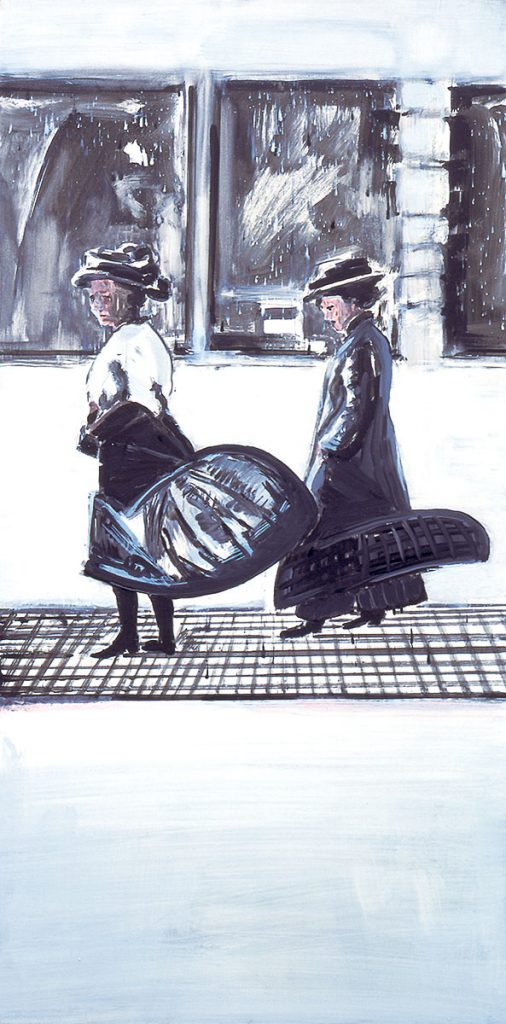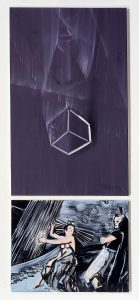Mars Berlin Hollywood

1909 Curiosity (Berlin), 2005, oil on wood panel, 80 x 40 cm.
“Even when the painting seems to escape history (1909 Curiosity [Berlin]), it sends us back to a déjà-vu (as a matter of fact, the Hollywood imagery of Marilyn Monroe in The Seven Year Itch), proposing a paradoxical genealogy. Images that are oddly undatable, that are ‘timeless’, that allows us to imagine a going back in time: the work of the painter consists in going back to a point of uncertainty where another reading of signs, another story, could have been possible.”
Patricia Falguières, “Childhood and History”, in Adam Adach, Musée national Message Biblique Marc Chagall, Nice, 2005
“Mythical Aelita, the first Soviet science fiction film made in 1924 by Iakov Protazanov, is referenced in a diptych by Adam Adach. In this classic silent movie, the hero, Los, is obsessed by the construction of a spaceship that will allow him to join the Martian princess, Aelita, with whom he has fallen in love in his dreams. The film’s message is the pernicious futility of this selfish and extravagant initiative at the expense of socially constructive work and conjugal fidelity at a time when ideas of sexual freedom threatened Soviet social stability. Yet Protazanov’s Martian monarchy is spellbinding. Los’ interplanetary dream exercises more power over the spectator – then and now – than the moral of the story. In his vertical diptych, titled “Aelita Back and Forward,” Adam Adach announces the duality fundamental to all ideologies: the repulsion of content versus the attraction of form, or vice versa.

Aelita Back And Forward, 2006, oil on canvas, 2 parts, 70 x 90 cm, 145 x 90 cm.
“Underneath, in a disadvantageous stratigraphy, we find a small figurative painting which initially seems to reproduce the famous costumes and futurist set created for Aelita by Alexandra Ekster and Isaak Rabinovich. Yet Adam Adach does not reproduce them at all but rather, quotes them from memory, with flagrant errors that his handling accentuates. The artist takes on the role of the spectator recalling strong images after years of forgetting them, or the place of a child leaving a movie theater with his imagination sparked by what he has seen. As for the second element, it is an abstraction twice the size, whose dominant position should wipe out crazy Martian fantasies, especially since its quasi-monochrome geometry evokes the crash of Los’ spaceship. The result is totally different, however, because the glamour of Aelita’s planet comes to the surface, like one powerful idea fighting it out with another.”
Frederico D. Rosa, “The world of Zarah Leander, Captain Blood and Antonina Traczyk”, in Adam Adach. Portraits. Mirrors, 2007
